
Calligraphy is a visual art related to writing. It is the design and execution of lettering with a pen, ink brush, or other writing instrument. Contemporary calligraphic practice can be defined as "the art of giving form to signs in an expressive, harmonious, and skillful manner".

Penmanship is the technique of writing with the hand using a writing instrument. Today, this is most commonly done with a pen, or pencil, but throughout history has included many different implements. The various generic and formal historical styles of writing are called "hands" while an individual's style of penmanship is referred to as "handwriting".

Cursive is any style of penmanship in which characters are written joined in a flowing manner, generally for the purpose of making writing faster, in contrast to block letters. It varies in functionality and modern-day usage across languages and regions; being used both publicly in artistic and formal documents as well as in private communication. Formal cursive is generally joined, but casual cursive is a combination of joins and pen lifts. The writing style can be further divided as "looped", "italic", or "connected".

Edward Johnston, CBE was a British craftsman who is regarded, with Rudolf Koch, as the father of modern calligraphy, in the particular form of the broad-edged pen as a writing tool.

Western calligraphy is the art of writing and penmanship as practiced in the Western world, especially using the Latin alphabet.
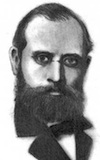
Charles Paxton Zaner was an American calligrapher, pen artist, and teacher of penmanship.

Secretary hand or script is a style of European handwriting developed in the early sixteenth century that remained common in the sixteenth and seventeenth centuries for writing English, German, Welsh and Gaelic.

Spencerian script is a handwriting script style based on Copperplate script that was used in the United States from approximately 1850 to 1925, and was considered the American de facto standard writing style for business correspondence prior to the widespread adoption of the typewriter. Spencerian script, a form of cursive handwriting, was also widely integrated into the school system as an instructional method until the "simpler" Palmer Method replaced it. President James A. Garfield called the Spencerian script, "the pride of our country and the model of our schools."

The term "chancery hand" can refer to either of two distinct styles of historical handwriting.
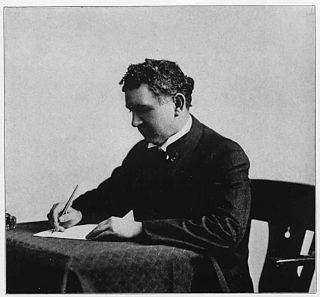
Louis Madarasz was an American calligrapher, born in San Antonio, Texas, regarded as one of the most highly skilled ornamental penmen of all time.
Patricia Ann Blair is an American calligrapher. She served as White House chief calligrapher and director of the Graphics and Calligraphy Office at the White House.

Michael Sull is an IAMPETH master penman and author living in Mission, Kansas, United States. An expert on penmanship, he was Ronald Reagan's calligrapher after his presidency and is known worldwide for his skill and teaching ability. He regularly teaches handwriting, calligraphy, and engrossing programs throughout the United States, Europe and Asia.

The Contemporary Museum of Calligraphy, dedicated to the art of calligraphy, is situated in Sokolniki Park, Moscow. The museum collection features calligraphy masterpieces from 65 countries. The concept was elaborated by Sokolniki Exhibition and Convention Centre and the National Union of Calligraphers. The museum was officially opened on August 14, 2008.
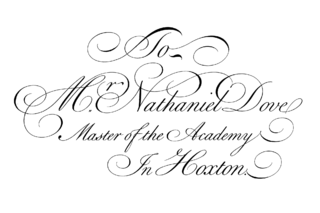
A copperplate script is a style of calligraphic writing most commonly associated with English Roundhand. Although often used as an umbrella term for various forms of pointed pen calligraphy, Copperplate most accurately refers to script styles represented in copybooks created using the intaglio printmaking method.
Fateh Ezatpoor, son of Ahmad, born in 1958, is a calligraphist, illuminated manuscript artist, university professor, and researcher.
Zaner-Bloser, Inc., is a company headquartered in Columbus, Ohio, which publishes handwriting, reading, writing, spelling, and vocabulary programs.
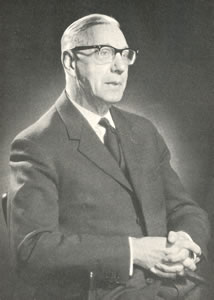
Alfred John Fairbank CBE was a British calligrapher, palaeographer and author on handwriting.
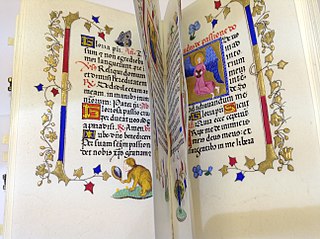
Patricia Lovett is a British scribe, calligrapher and illuminator from Kent. She is the author of several books and teaches calligraphy, illumination and manuscript skills in the UK and worldwide. She was chair of the Heritage Crafts Association between 2017 and 2022, having been vice-chair for several years previously and in 2013 was awarded an MBE for services to calligraphy and the protection of heritage crafts.

The Zaner-Bloser is a teaching script for handwriting based on Latin script as well as a system of penmanship instruction, which originated around 1904 at the Zanerian College of Penmanship in Columbus, Ohio. Charles P. Zaner (1864–1918) and Elmer W. Bloser (1865–1929), originally a Spencerian Method instructor, developed their teaching script with the aim of allowing learners an easier transition from print writing to cursive. The Zaner-Bloser Method first teaches block letters and then cursive in order to enable written expression as quickly as possible and thus develop the ability to write. Material relating to the method of instruction practiced by Zaner and Bloser is still being published by the Zaner-Bloser Company, a subsidiary of Highlights for Children.
The Society for Italic Handwriting (SIH) is a British organisation promoting the use of italic handwriting, and better and more legible handwriting in general. It was founded in 1952 by Alfred Fairbank and other members of the Society of Scribes & Illuminators.













